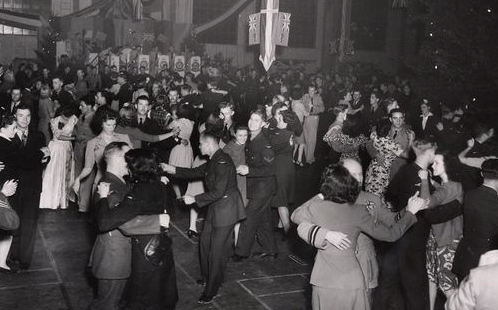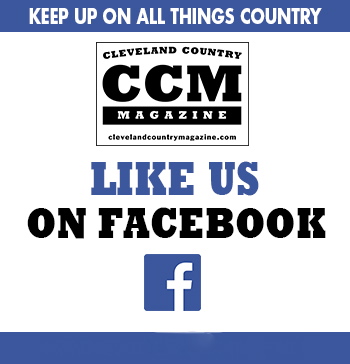“Swing Dancing” I’m sure creates an image in your mind. We picture couples dancing at a fast pace to jazzy music with bouncy movements, a lot of arm swinging, twirls, flips and other quick acrobatic movements. We think black and white movies, song and dance scenes in diners, early Rock & Roll, and did I mention poodle skirts? Yes, this is early swing and your image is likely that of the Jitterbug or Lindy styles of East Coast Swing dancing. Like the popular music during its time swing was fast, fun, and was widely popularized in movies and dance halls across America in the 1920s and 193os.
Music and dancing, well let’s say they are in a serious long-term relationship and music almost always takes the lead, pun intended. As music evolves, so does dance and this is certainly true with swing dancing. Early swing has seen many evolution’s and has influenced many regional styles of dance we know today. West Coast Swing evolved from Lindy hop and has quite an interesting story.
Smooth, classy, playful, and cool are words I would use to describe West Coast Swing. It’s social, casual, and it seems to speaks to you in its own language. You can do West Coast Swing to virtually any song on the radio since the 1970s, though in recent years has become very popular in the Country dance scene. It’s the official State Dance of California, although West Coast Swing has deep roots on the east coast and even right here in Ohio.
If you can walk and talk at the same time, I promise you can learn to West Coast Swing. A good teacher can help and speaking of which I recently had the opportunity to catch up with my friend and fellow dancer, Corey Flowers. Corey is a dancer, a competitor, and he is also a dance instructor. In fact, in he will be teaching West Coast Swing on Thursdays in October at the Thirsty Cowboy in Medina and the lessons are free.
Basic steps and cadence aside there is no choreography to West Coast Swing. This makes the dance versatile and fun. This also makes it a little difficult to understand the history behind it. Many dancers have been given credit for it, but no dancer has actually taken official credit for it.
The 1930s were an interesting time in dance and world events. The Jitterbug and Lindy Hop were very popular. In 1933, Prohibition ended in the United States and alcohol sales quickly expanded from the shadows of the speakeasy to the main bar of dance halls everywhere. Later in the decade came the beginning of World War II and the end of the Great Depression. The US economy was improving so people wanted to get out of their homes at night, socialize, and feel good. Many people danced socially and dance halls began to boom.
Alcohol sales increased, but coincidentally so did dance related injuries. Some ballroom dance instructors taught stripped-down or safer beginner versions of swing dancing and some dance halls simply banned swing dancing altogether. As the United States entered World War II in the 1940s a hefty tax was levied on alcohol being sold at dance halls, so many began to forbid dancing or closed their doors as it impacted business.
The United States entered World War II in 1941 and more than 16 million Americans served in our armed forces. West coast cities San Diego, Los Angeles, and San Francisco became the primary ports for soldiers deploying in to the Pacific. Hotels, restaurants, bars, theaters, and dance halls sprung up nearby and still operate today. Soldiers returning from the war frequented the dance halls and many would meet their future spouses at dancing events. West Coast Swing was the preferred style of dance during this time particularly because of its casual and social style. For beginners it was easy to learn (yes, even while intoxicated) and for the experienced dancer, West Coast Swing pleasantly fused with traditional and European styles of ballroom dancing.
What’s with the slot? West Coast Swing is quite the versatile dance that may, at the leaders discretion, involve fusion of virtually any dance style on the planet. However, it’s performed in an imaginary rectangular slot approximately three feet wide and six feet long. The lead may briefly step outside the slot as the follower passes, but the follower never leaves the slot. You may also hear the slot referred to as the “yoga mat”.
I have heard several interesting theories as to why we do West Coast Swing in a slot. One entertaining theory had to do with drunken or otherwise unskilled sailors in the 1940s finding it easier to just move from side to side as their female dance partner did all of the actual dancing back and forth. Another possibility is when dancing in the isles of a jazz theater, you literally had to dance in a slot to avoid tripping over chairs or each other. The widely believed theory has to do with performance on stage, movies, and television. Dancing in a slot perpendicular to the audience or camera means the faces of the dancers are almost always visible.
Dean Collins was certainly an early West Coast Swing influence. Dean was born here in Ohio in 1917 then moved to New York City. He eventually came to dance at the Savoy Ballroom in Harlem, which was massive and glamorous. In 1935, Dean was named dancer of the year by the New Yorker and the Lindy Hop was his dance of choice. Dean moved to Los Angeles in 1936 where he led a very successful career in television, movies, dance, and dance instruction. His Savoy Style Lindy (a slotted dance) evolved to having very smooth flowing movements including his favorite move, the Sugar Push with a spin. Dean danced and taught dance in Los Angeles until his death in 1984.
Skippy Blair certainly deserves recognition and in my mind is a living legend in the world of West Coast Swing. Skippy, a brilliant and passionate woman is credited with many aspects of the progression of not only West Coast Swing, but a long list of things dance and dance instruction related. Most notable, she was a member of the group that successful lobbied California state legislature to designate West Coast Swing as the official State Dance of California. In 1994, she was inducted into the National Swing Dance Hall of Fame. At the time I wrote this story Skippy is 93 years old and living a very happy life in Southern California. Yes, she still dances every single day.
West Coast Swing lessons can usually be taken without bringing a partner and it’s very easy to get started even without any dancing experience. Sounds strange, I know. As a lead, once you are comfortable with the starter step, left side pass, right side pass, and anchor step – boom, you are a West Coast Swing dancer. As a follow, once you are comfortable with following a lead across an imaginary yoga mat ending with an anchor step – boom, you are a West Coast Swing dancer. Every West Coast Swing event includes a “social dance” which means you will socialize with the dancers around you by dancing with them. At West Coast Swing lessons, leads rotate periodically so you actually will dance with everyone which really helps you learn and progress.
West Coast Swing, what’s in a name really… You would think being born and raised in Southern California that I would have learned this dance while I lived there. Nope. I took my first lesson a little over a year ago here in Ohio and I love it. I have since done West Coast Swing in Illinois, Michigan, Indiana, Georgia, Nevada, and yes, once in California. It’s everywhere! Right here in Cleveland there is a significant and very friendly presence with many places to take free lessons. Check out the Cleveland Westies group on Facebook.
Are you ready to Swing, West Coast that is? Come take That First Step with us Thursdays at 8pm at Thirsty Cowboy in Medina.











